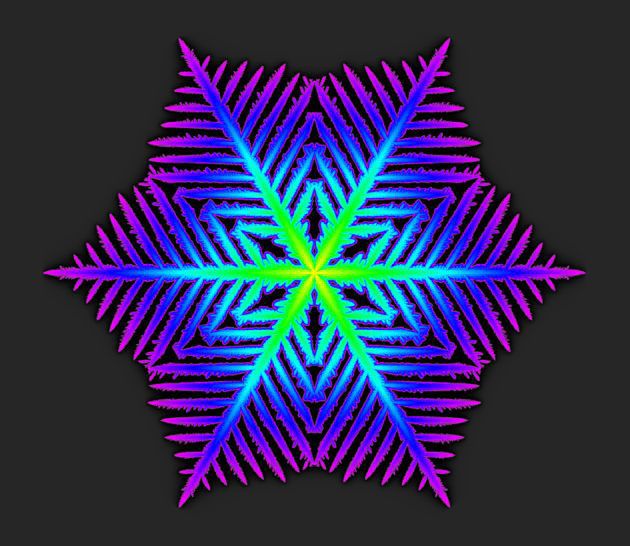Virtual Snowflakes: Closing in on Reality

Some of the loveliest snowflakes you might see this winter glow warmly on a computer screen.
Lafayette College mathematics professor Cliff Reiter might share the joy of a kid making snowflakes with scissors and paper, but his computer simulations of crystal growth aim at deeper revelation. The sublimity of his creations attest to the beauty he sees in the elegant algorithms underneath.
"Isn't it the juxtaposition of symmetry with complexity that makes snowflakes beautiful? With models, or mathematical arguments, simplicity plays a role similar to symmetry," Reiter said.
By focusing on snowflake growth, however, Reiter has pitted himself against giants. The closest thing to a benchmark for snowflake simulation is a well-known model developed by Institute for Advanced Studies physicist Norman Packard, who worked with famed fellow physicist Stephen Wolfram, author of "A New Kind of Science."
Most prior models were overburdened by convolutions that were counterintuitive given the spontaneous generation of the six-pronged crystals in nature. Reiter agreed with Packard that instead a technique called cellular automata, in which simple rules govern each pixel as it adds to the existing structure, was the best tool for understanding the natural phenomenon.
"In the snowflake model I use, as in any local model, at any one time a cell 'sees' only the status of neighbors. But over time, information passes further, which allows the complex behavior," Reiter explained. "The gray shadows in the snowflake pictures show the growing branches depleting material between the branches, forcing the outward growth."
The same principles could also apply to the further and further elaborations of fluid dynamics, he said, where ripples and eddies branch into new ripples and eddies, and so on. Indeed, that approach is the basis of Wolfram's book, which he argues will spawn nothing less than a new cosmology. But Steven Levy notes in "Artificial Life: The Quest for a New Creation" that the Packard snowflakes highlighted in Wolfram's book lacked the intricacy of the real item. Reiter's snowflakes come much closer to verisimilitude, and use only two parameters. His work will be published in the journal Chaos, Solitons and Fractals later this year.
Sign up for the Live Science daily newsletter now
Get the world’s most fascinating discoveries delivered straight to your inbox.
But Reiter doesn't claim to have precisely reproduced the snowflake in silicon and pixels. Besides, why constrain oneself? Nature's H2O molecule might bind the snowflake to hexagons, but couldn't a computer generate pentagonal or octagonal snowflakes just as easily? Not if he plays by the rules of crystals, which give his work real-life relevance.
"Eight-fold rotations are not possible with crystalline lattices," Reiter said. But there are materials that grow dendrites with four-fold symmetry, he added. More than that, there are such things as quasicrystalline structures that could yield surprises.
"The model I used can be and has been extended to quasicrystalline materials. Prince Chidyagwai [Reiter's student] and I worked on that and produced some nice growth patterns with 8-fold symmetry, and much more," he said. Now it's time for the lab work.
"I'd be excited to see physical scientists grow such things with physical quasicrytalline materials," he said.











